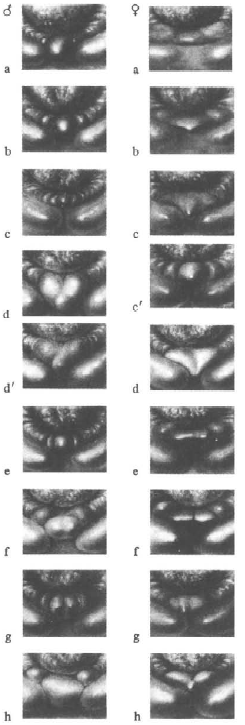Sexing Day Old Chicks
Sexing Day Old Chicks
Sexing most day-old chicks requires training and practice. There are some old wives' tales that have circulated around over the years but they are no more accurate than flipping a coin. The Japanese developed vent sexing which can be used for any breed but requires a lot of training to be accurate. For specific breeds of chickens sex-linked crosses can be used allowing for easy identification of male and females based on feather color (or feather growth). This only works for specific crosses, however.
OLD WIVES' TALES
A method that has been cited for sexing chicks before they hatch involves observing the shape of the egg. According to this method, football-shaped eggs will yield male chicks while more oval or round-shaped eggs females. In reality, the shape of the egg is not related to the sex of the offspring. In fact, a hen will produce a shell for any object passing down the reproductive track and may or may not include a yolk. Similarly, eggs have shells whether or not the egg is actually fertilized or not.
Another method is based on the method used by some to determine whether a pregnant women is carrying a body or a girl. In the case of chicks it involves tying a needle or weight to the end of a piece of string and hold it over the chick. If the string moves in a circular pattern it indicates the chick is a female (pullet) while if the object moves back and forth it is a male (cockerel).
VENT SEXING
 The reproductive organs of male chickens are located within the body cavity making it difficult to determine sex based on physical attributes. Male chicks have a rudimentary sex organ that can be detected by trained sexers. It is not easy though, as shown in the images to the left.
The reproductive organs of male chickens are located within the body cavity making it difficult to determine sex based on physical attributes. Male chicks have a rudimentary sex organ that can be detected by trained sexers. It is not easy though, as shown in the images to the left.
Source: Sexing day-old chicks: A case study and expert systems analysis of a difficult perceptual-learning task (Journal of Experimental Psychology 1987, Volume 13, Number 4, pages 640-645)
SEX-LINKED CROSSES

There are some characteristics that are genetically linked to the sex/gender of the chick. Sex-linked crosses take advantage of these characteristics to produce offspring that can be easily identified as male or female at day of hatch.
More information on sex-linked crosses
